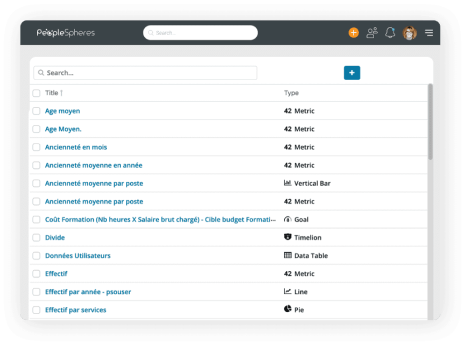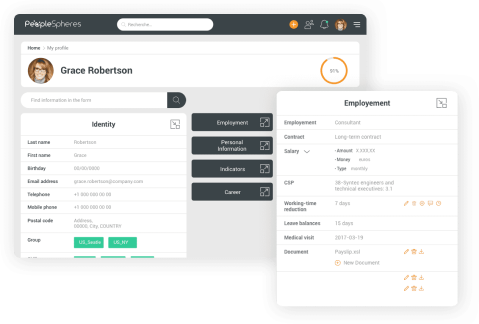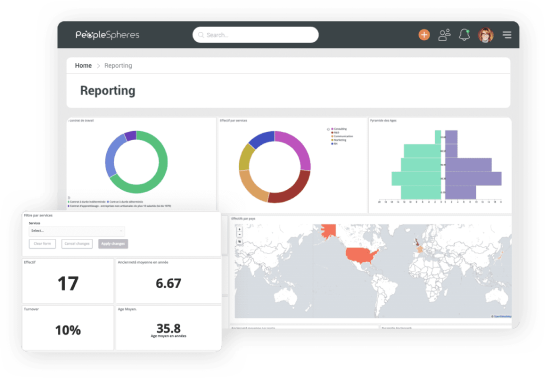Access and report on data from any HR tool. With one log in.
Assemble your unified database from 100+ pre-built connectors

A unified and dependable database that grows with you
With PeopleSpheres, data from all your connected HR systems are synced in real-time to a centralized database. Introduce new HR tools at your own pace knowing you’ll always have a complete data set.

One employee profile. Effortless fact-finding.
Pinpoint any employee information you need on a unified employee profile within PeopleSpheres.
Role-based permissions let you customize the view so that data stays 100% relevant and secure.

Stress-free and flexible HR reporting
Stop loading data from multiple sources into frankenstein spreadsheets.
We put all your employee data in one place for you, so you can generate reports and dashboards at the speed your business demands.

More HR systems ≠ more administration. PeopleSpheres handles it all for you.
We’ve created a strong partner network that allows us to become your one-stop-shop for everything including customer support, implementation, and invoicing.
You choose the tools that best meet your needs. And we do the rest.

Data-driven businesses get ahead with PeopleSpheres

“We are able to create a dashboard constructed with economic and social databases… which we had difficulty constructing before and can do very easily now because we have this central database at the heart of our systems.”

“The data is obviously not an end goal, but it is a way to bring performance, quality, and serenity to teams. Until recently, most of our tools were managed by fax and email, and a little with Excel files, so you can imagine the limitations.”
FAQs
What is data unification?
+Data unification is the process of integrating, cleansing, and consolidating data from multiple sources to create a single, trusted, and interoperable view of core entities like customers, products, or suppliers. It involves techniques such as entity resolution, master data management (MDM), and the creation of reusable data products.
What challenges does data unification address?
+Data unification helps overcome:
-
Data silos: Integrating fragmented data from various sources.
-
Inconsistencies and errors: Standardizing data formats and correcting inaccuracies.
-
Duplicate records: Merging redundant entries to maintain data integrity.
-
Compliance risks: Implementing data governance policies to meet regulatory standards.
How does PeopleSpheres support data unification?
+PeopleSpheres acts as a single entry point that unifies all HR software and data sources—whether they’re payroll systems, time tracking tools, performance platforms, or benefits apps. This centralized approach allows organizations to break down data silos and ensure consistency across the entire employee lifecycle. Each connector can be configured to map fields across different systems, even if they use different data structures. This ensures that all data—no matter its source—is normalized, cleaned, and usable within one unified interface.
It standardizes the way data is pulled from and pushed to each system, enabling:
-
Real-time data synchronization
-
Unified employee records
-
A harmonized data model across tools
This empowers companies to maintain a single source of truth for employee data without replacing existing systems.
How can I get started with data unification?
+Begin by:
-
Assessing your data landscape: Identify data sources and existing silos.
-
Defining objectives: Determine what you aim to achieve with unified data.
-
Choosing the right tools: Select a platform like PeopleSpheres that offer scalable and secure data unification solutions.
-
Implementing governance policies: Establish data quality standards and compliance measures.
Want to learn more about how it works?
Get in touch with one of our PeopleSpheres experts to get a custom demo
 Discover effective and easy-to-implement strategies to unify HR data
Discover effective and easy-to-implement strategies to unify HR data